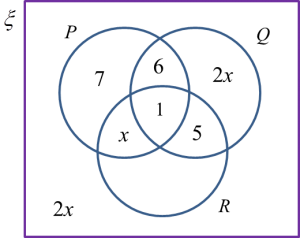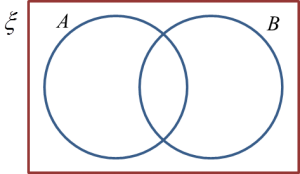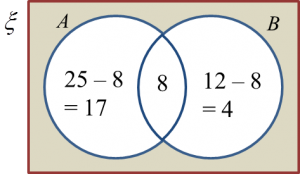3.3b Union of Sets (Part 2)
Example 1:
The Venn diagram below shows the number of elements in the universal set, ξ, set P, set Q and R.


Given n(Q) = n(P υ R)’, find n(ξ).
Solution:
n(Q) = n (P υ R)’
2x + 6 + 1 + 5 = 2x + 2x
2x + 12 = 4x
2x = 12
x = 6
n(ξ) = 2x + 2x + x + 7 + 6 + 1 + 5
= 5x+ 19
= 5(6) + 19
= 30 + 19
= 49
Example 2:
Diagram below is a Venn diagram showing the universal set, ξ = {Form 3 students}, set A = {Students who play piano} and set B = {Students who play violin}.

Given n(ξ) = 60, n(A) = 25, n(B) = 12 and n(A ∩ B) = 8, find the number of students who do not play the two instruments.
Solution:
The students who do not play the two instruments are represented by the shaded region, (A υ B)’.


Number of students who do not play the two instruments
= n (A υ B)’
= 60 – 17 – 8 – 4
= 31